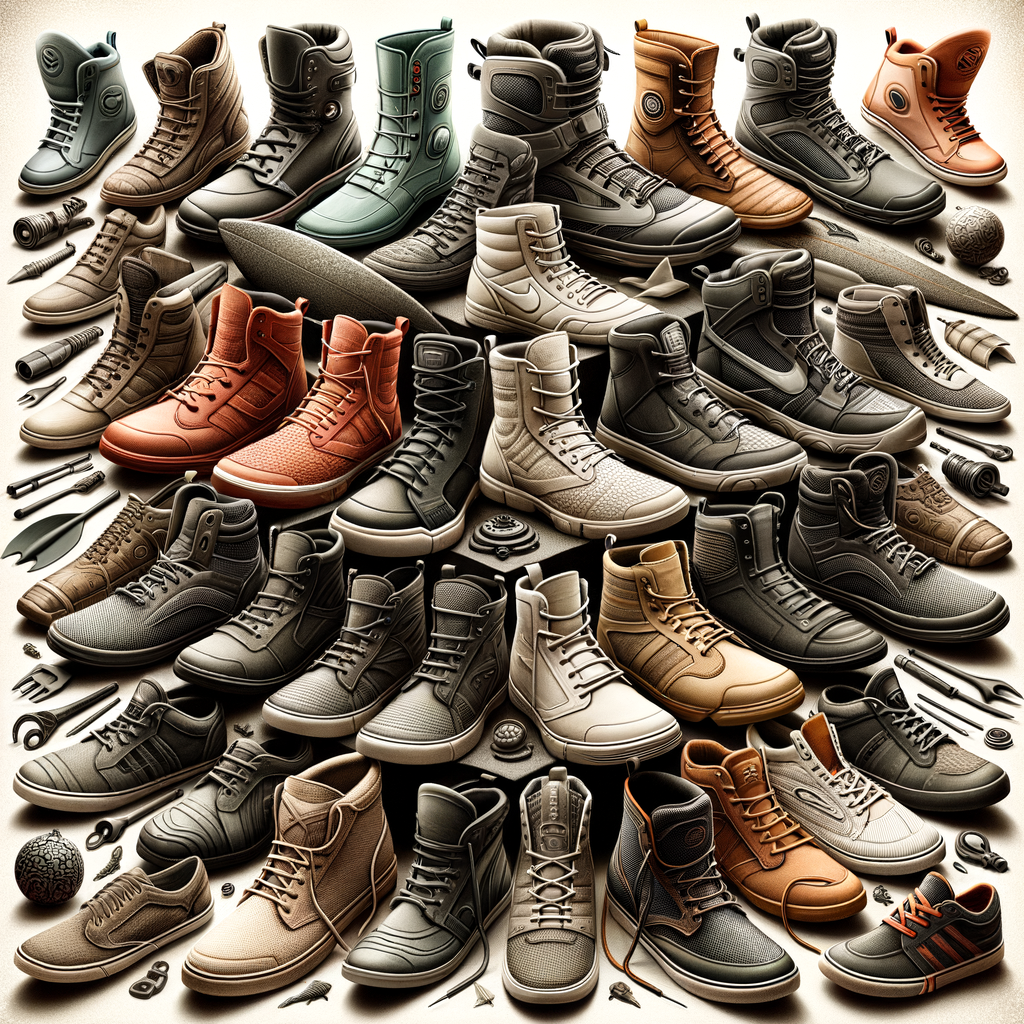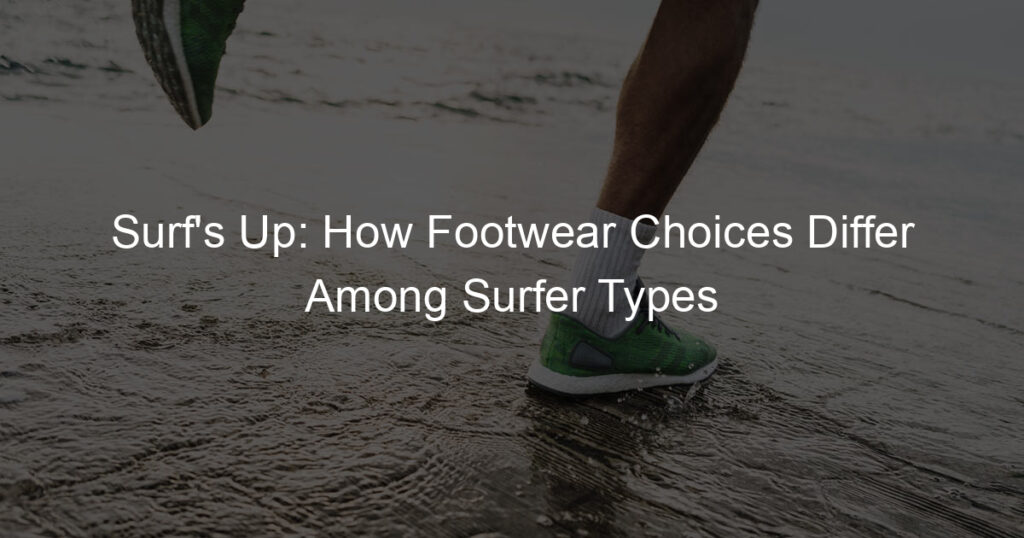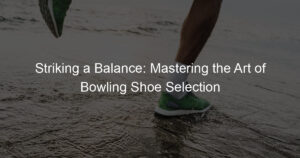
Introduction to Surfing Footwear
Surfing is an exciting sport that requires not only skill and balance, but also the right equipment. One of the most overlooked aspects of this equipment is surfing footwear. In this article, we will discuss the importance of proper footwear in surfing and provide an overview of the different types of surfing shoes available.
- Importance of Proper Footwear in Surfing
- Overview of Different Types of Surfing Shoes
Footwear plays a crucial role in surfing. The right pair of shoes can significantly enhance your performance by providing the necessary grip and balance on the surfboard. They also protect your feet from sharp objects and rough surfaces, reducing the risk of injuries.
Moreover, surfing shoes help maintain body temperature. The water can be cold, and prolonged exposure can lead to conditions like hypothermia. A good pair of surfing shoes can keep your feet warm, allowing you to surf comfortably for longer periods.
There are various types of surfing shoes available in the market, each designed to cater to specific needs and conditions.
| Type of Surfing Shoe | Description |
|---|---|
| Surf Booties | These are the most common type of surfing shoes. They are made of neoprene, a material that provides excellent insulation and flexibility. Surf booties are ideal for cold water conditions. |
| Reef Boots | Reef boots are designed for surfing in areas with rocky bottoms. They have a hard sole that protects the feet from sharp rocks and coral. |
| Split Toe Boots | These boots have a separate compartment for the big toe, providing better balance and control on the surfboard. They are perfect for surfers who require enhanced board feel. |
Choosing the right type of surfing shoe depends on various factors such as the water temperature, the surfboard type, and personal comfort. It’s important to try different types and find the one that suits you best.
Understanding Different Types of Surfers
Surfing is a popular sport that attracts a wide range of participants. There are different types of surfers, each with their own unique style and approach to the sport. Let’s take a closer look at three main types: professional surfers, recreational surfers, and competitive surfers.
- Professional Surfers
- Recreational Surfers
- Competitive Surfers
Professional surfers are those who have made surfing their career. They participate in international competitions and often have sponsors. These surfers train rigorously, often for many hours a day, to perfect their skills and techniques. They are known for their exceptional talent and dedication to the sport. An example of a professional surfer is Kelly Slater, who has won numerous world titles.
Recreational surfers are those who surf for fun and relaxation. They may not have the same level of skill as professional or competitive surfers, but they enjoy the sport and the lifestyle that comes with it. Recreational surfers may surf regularly, but they do not necessarily participate in competitions. They value the joy and peace that surfing brings them, rather than the competitive aspect of the sport.
Competitive surfers are those who participate in surfing competitions. They may not be professional surfers, but they take the sport seriously and strive to improve their skills. Competitive surfers often train regularly and follow a strict diet and exercise regime. They are driven by the thrill of competition and the desire to win.
In conclusion, whether you’re a professional, recreational, or competitive surfer, the most important thing is to enjoy the sport and respect the ocean. Each type of surfer brings a unique perspective and contributes to the diverse surfing community.
Footwear Preferences in Surfing
When it comes to surfing, the choice of footwear can significantly impact a surfer’s performance. This is especially true for professional surfers who rely on their gear to help them ride the waves efficiently and safely. Let’s delve into the footwear preferences of professional surfers and explore some case studies of famous surfers and their footwear choices.
Professional Surfers
Professional surfers are athletes who compete in surfing competitions worldwide. Their footwear choices are often dictated by the need for optimal performance, comfort, and safety.
- Footwear choices for professional surfers
- Case study: Footwear choices of famous professional surfers
Professional surfers typically prefer surf booties or neoprene boots. These footwear options provide the necessary grip on the surfboard, protect the feet from cold water, and prevent cuts or bruises from hidden rocks or corals. The thickness of the booties varies depending on the water temperature. In warmer climates, surfers might opt for thinner booties or even go barefoot for a better feel of the board.
Let’s take a look at the footwear choices of some famous professional surfers:
| Surfer | Footwear Choice |
|---|---|
| Kelly Slater | Neoprene boots |
| Stephanie Gilmore | Surf booties |
| John John Florence | Barefoot in warm climates, neoprene boots in cold water |
As seen from the table, the choice of footwear varies among professional surfers. However, the common thread is the need for grip, comfort, and protection. The choice between booties, neoprene boots, or going barefoot is often a personal preference based on the surfer’s comfort and the specific surfing conditions.
Recreational Surfers
Recreational surfers are those who surf for fun and relaxation rather than competition. Their footwear choices are often influenced by comfort, functionality, and style. Let’s delve into the popular footwear choices among recreational surfers and the key factors influencing their choices.
- Popular Footwear Choices Among Recreational Surfers
- Surf Booties: These are a favorite among many recreational surfers due to their comfort and grip. They are made of neoprene, a material that provides warmth in cold water.
- Reef Sandals: These are ideal for beach walks and post-surf relaxation. They are lightweight, comfortable, and quick-drying.
- Water Shoes: These are versatile and can be used for various water activities. They offer protection and traction on slippery surfaces.
- Key Factors Influencing Footwear Choice
- Comfort: Since recreational surfing is about enjoyment, comfort is a top priority. Footwear should fit well and not cause any discomfort while surfing or walking on the beach.
- Functionality: The footwear should serve its purpose. For instance, surf booties should provide warmth in cold water, and sandals should be quick-drying.
- Style: Many recreational surfers also consider the style of the footwear. They often choose designs that reflect their personal style or the latest trends.
- Price: As recreational surfers don’t necessarily need high-performance gear, they often consider the price and opt for affordable options that meet their needs.
Recreational surfers often opt for footwear that provides a balance between comfort and performance. Here are some popular choices:
Several factors influence the choice of footwear among recreational surfers. Here are the key ones:
In conclusion, the choice of footwear among recreational surfers is influenced by a combination of factors, including comfort, functionality, style, and price. The key is to choose footwear that meets your individual needs and enhances your surfing experience.
Competitive Surfers
Competitive surfers are a unique breed of athletes. They demand the best from their gear, and their footwear is no exception. Let’s dive into the footwear requirements for competitive surfing and how it impacts performance.
- Footwear Requirements for Competitive Surfing
Competitive surfers need to have footwear that provides excellent grip, comfort, and durability. These athletes often surf in challenging conditions, and their footwear needs to withstand the rigors of the sport.
Surf booties are the most common type of footwear for competitive surfers. They are designed to provide the surfer with excellent grip on the surfboard, protect their feet from sharp objects, and keep their feet warm in cold water conditions.
Surf booties are typically made from neoprene, a type of synthetic rubber that provides excellent insulation and flexibility. They also have reinforced soles for added durability and grip.
- Impact of Footwear on Performance
The right footwear can significantly impact a competitive surfer’s performance. Good surf booties provide the surfer with a solid grip on the surfboard, allowing them to perform complex maneuvers with confidence.
Additionally, comfortable footwear can help a surfer stay in the water for longer periods, increasing their chances of catching the perfect wave. On the other hand, ill-fitting or uncomfortable footwear can distract the surfer and potentially lead to foot injuries.
Lastly, the durability of the footwear is crucial. Competitive surfers can’t afford to have their footwear fall apart in the middle of a competition. Therefore, investing in high-quality, durable surf booties is a must for these athletes.
| Footwear Requirements | Impact on Performance |
|---|---|
| Excellent grip | Allows for complex maneuvers |
| Comfort | Enables longer surfing sessions |
| Durability | Prevents mid-competition failures |
In conclusion, the right footwear is a crucial part of a competitive surfer’s gear. It not only protects their feet but also enhances their performance by providing excellent grip, comfort, and durability.
Best Footwear for Different Surfing Styles
When it comes to surfing, the right footwear can make a significant difference. Different surfing styles require different types of footwear. Let’s explore the best footwear for longboarding, shortboarding, and big wave surfing.
-
Longboarding Footwear
Longboarding is a classic surfing style that requires balance and control. The best footwear for this style is often barefoot or neoprene booties. Going barefoot allows surfers to feel the board beneath them, providing better control. Neoprene booties offer protection from cold water and sharp objects without sacrificing too much board feel.
-
Shortboarding Footwear
Shortboarding is a more aggressive surfing style, requiring quick movements and sharp turns. Like longboarding, many shortboarders prefer to surf barefoot for maximum board feel. However, some may opt for surf booties, especially in colder conditions. These booties should be lightweight and flexible to allow for quick movements.
-
Big Wave Surfing Footwear
Big wave surfing is a thrilling and dangerous style of surfing. Surfers riding these massive waves often wear specialized surf booties. These booties provide extra grip to help surfers stay on their boards. They also offer protection against the powerful waves and potential hazards in the water.
In conclusion, the best footwear for surfing depends on your surfing style and the conditions you’ll be surfing in. Whether you choose to surf barefoot or with booties, the most important thing is that you feel comfortable and safe on your board.
Footwear for Various Surfing Conditions
Surfing is a thrilling sport that requires not only skill but also the right gear. One of the most important aspects of your surfing gear is your footwear. The type of footwear you need can change depending on the surfing conditions. Let’s take a closer look at the best footwear for various surfing conditions.
- Footwear for Cold Water Surfing
- Footwear for Warm Water Surfing
- Footwear for Rocky Beach Surfing
Surfing in cold water requires special footwear to keep your feet warm and protected. Booties, which are neoprene boots designed for water sports, are the most common choice for cold water surfing. They come in different thicknesses – the colder the water, the thicker your booties should be. For instance, a 5mm bootie is suitable for water temperatures between 38-52 degrees Fahrenheit.
When surfing in warm water, you might prefer to go barefoot to feel the board under your feet. However, if you want some protection, water shoes or reef booties are a good option. They are lightweight, offer protection against sharp objects, and still allow you to feel the board. Remember, the key here is comfort and minimalism.
Surfing at a rocky beach presents its own challenges. Sharp rocks and uneven surfaces can be dangerous, so sturdy footwear is essential. Reef booties with a thick, hard sole are the best choice for rocky beach surfing. They offer excellent protection and grip, helping you navigate the rocky terrain safely.
In conclusion, the right footwear can make a significant difference in your surfing experience. Whether you’re braving the cold waters or navigating rocky beaches, there’s a perfect pair of surf shoes waiting for you. Remember, comfort, protection, and suitability to the conditions are the key factors when choosing your surfing footwear.
Conclusion: Making the Right Choice
After a comprehensive exploration of surfing footwear, it’s clear that the right choice depends on several factors. These include the type of surfing, personal preferences, and the specific conditions in which you’ll be surfing. Let’s summarize the key takeaways and offer some final thoughts on the best footwear for surfers.
- Key takeaways on surfer’s footwear choices:
- Final thoughts on the best footwear for surfers:
Firstly, it’s important to understand that not all surfers wear the same footwear. Some prefer to go barefoot, while others opt for surf booties or water shoes. The choice often depends on the type of surfing and the conditions. For instance, longboard surfers who need to walk up and down the board often prefer bare feet for better control. On the other hand, surfers who ride in cold water or over rocky bottoms may choose booties for warmth and protection.
Secondly, comfort and fit are crucial. Ill-fitting footwear can cause discomfort, blisters, or even injuries. Therefore, it’s essential to try on different brands and sizes to find the perfect fit. Remember, the best surfing footwear should feel like a second skin.
Lastly, durability is another key factor. Surfing can be tough on footwear, so it’s worth investing in a quality pair that can withstand the rigors of the sport.
Ultimately, the best footwear for surfers is the one that meets their specific needs and preferences. It should provide the right balance of comfort, protection, and performance. Whether you choose to surf barefoot, with booties, or water shoes, the most important thing is to feel confident and comfortable in your choice.
Remember, surfing is about enjoying the waves and the connection with nature. So, choose your footwear wisely, but don’t let it distract you from the joy of the sport. As the famous surfer Laird Hamilton once said, “Surfing is about where your mind is. It’s the art of riding waves with your mind.”









